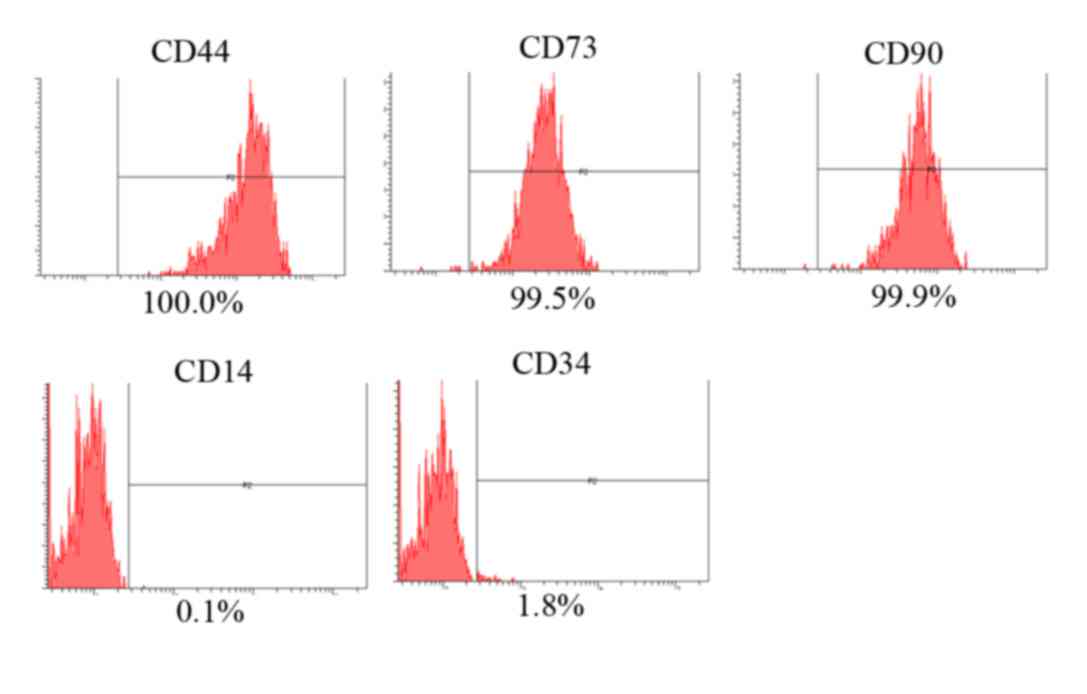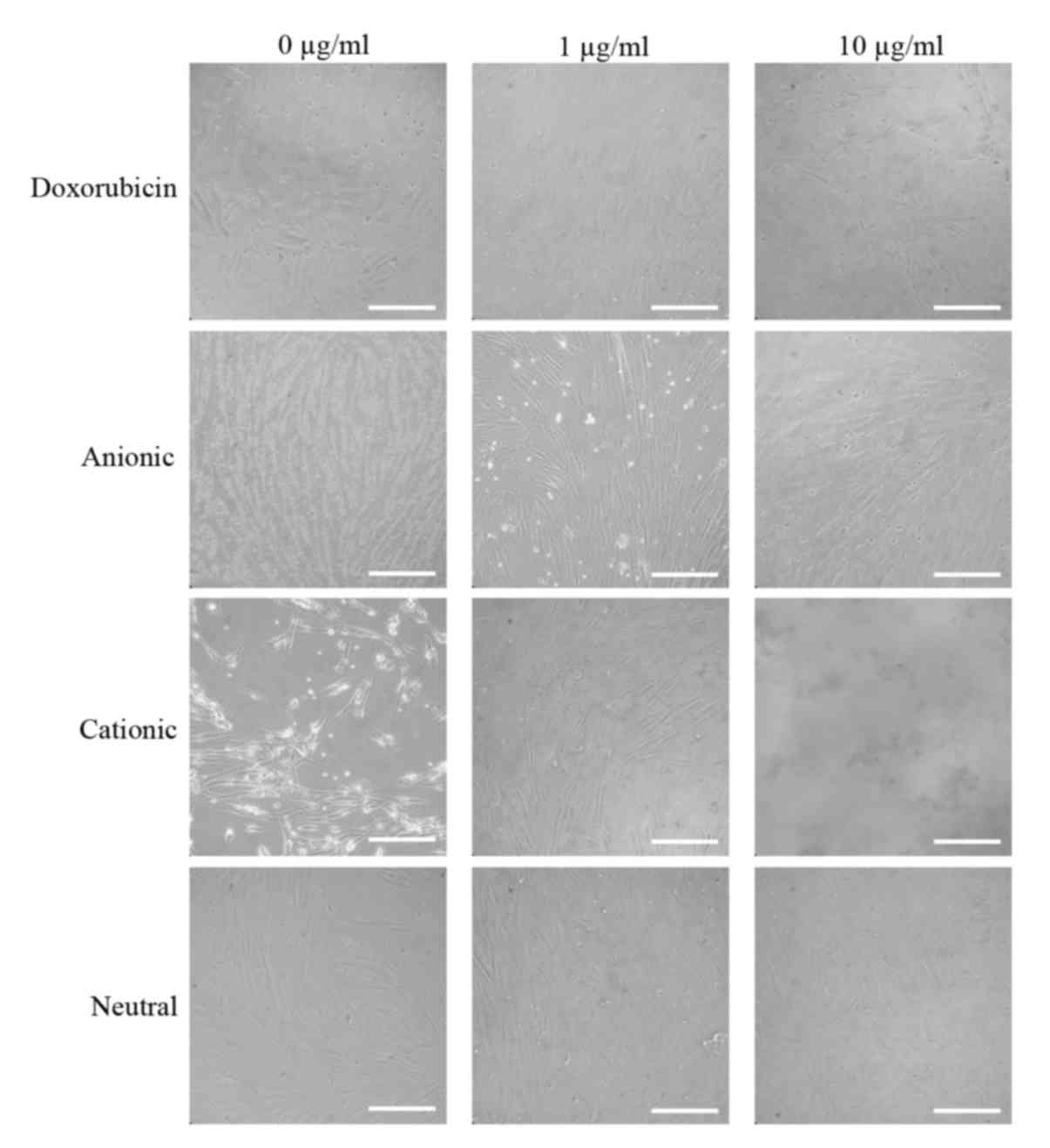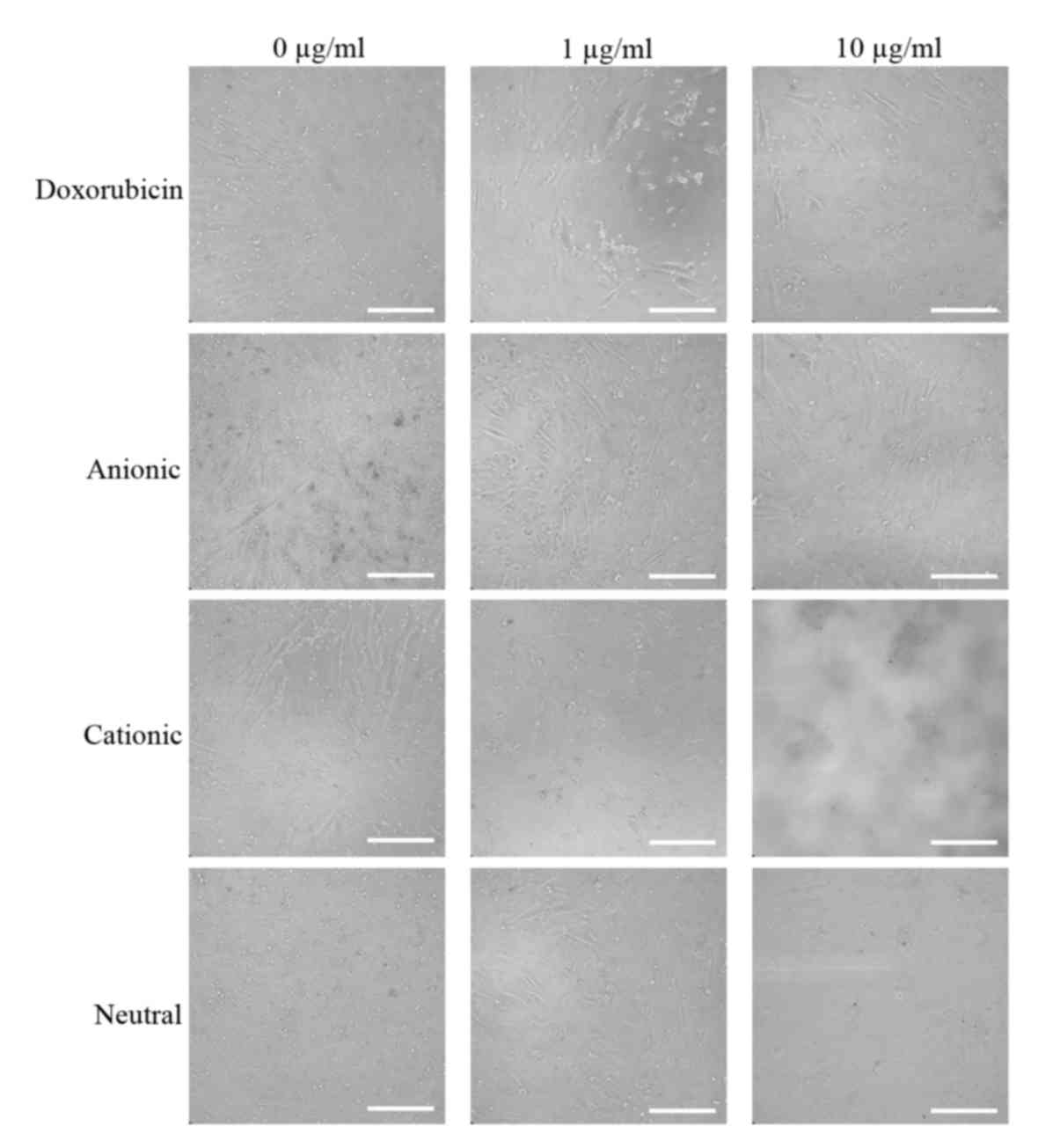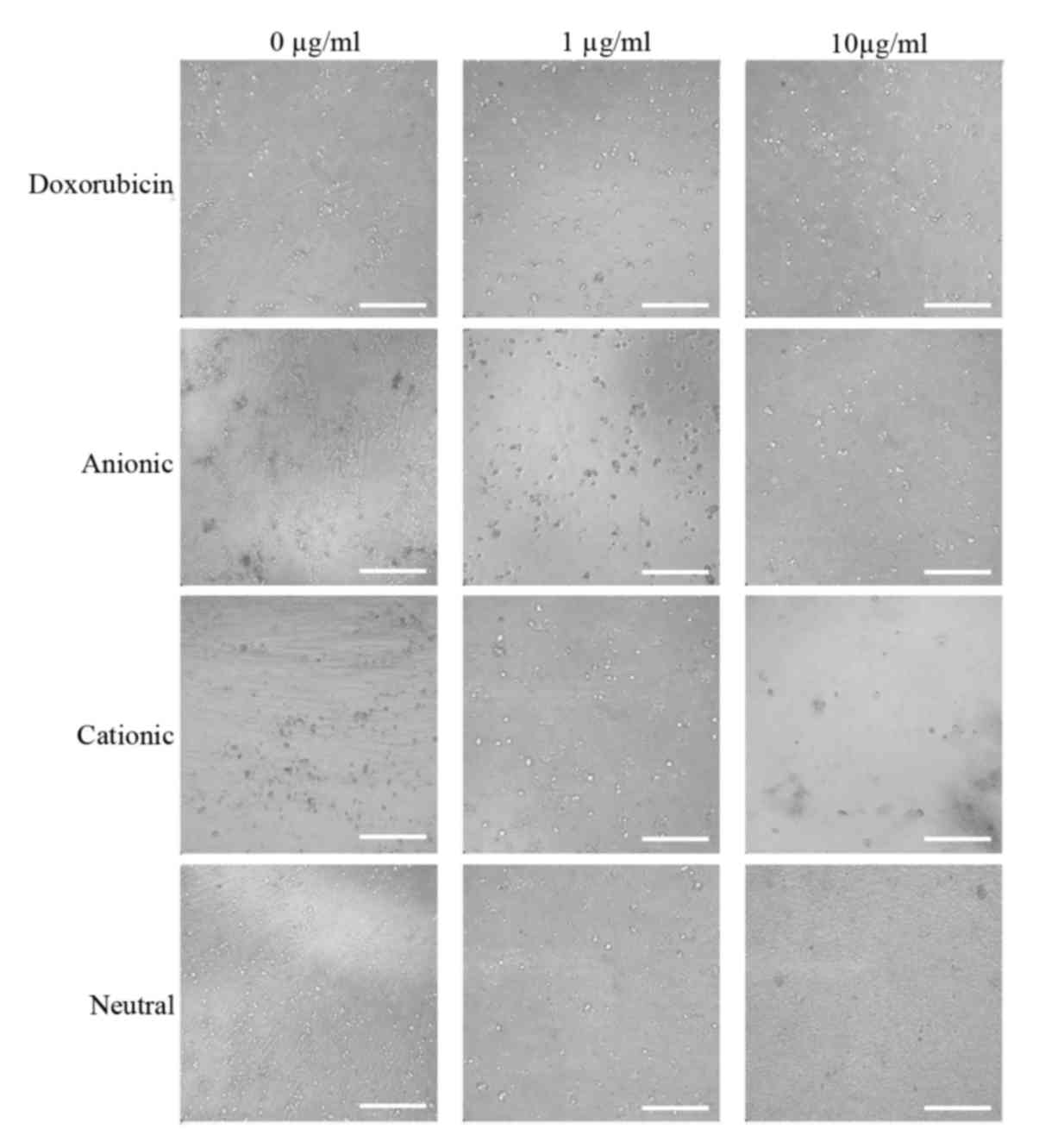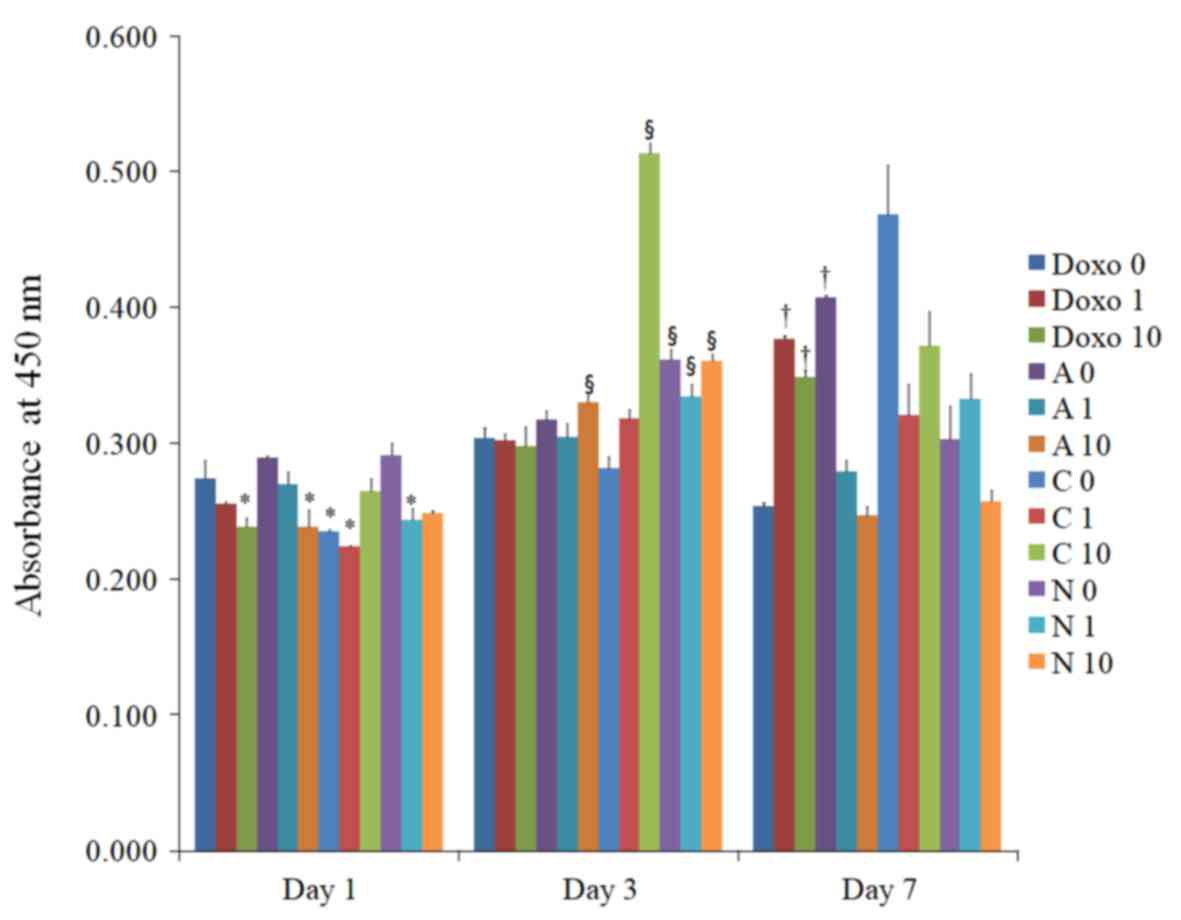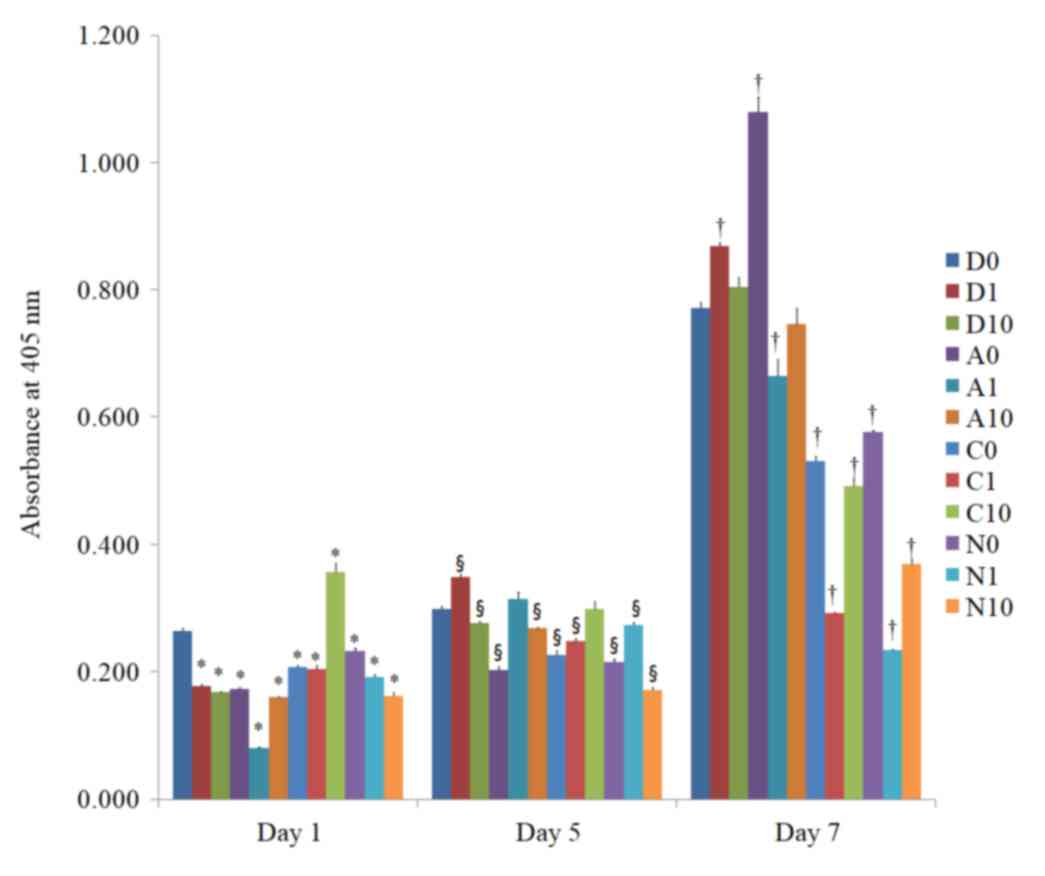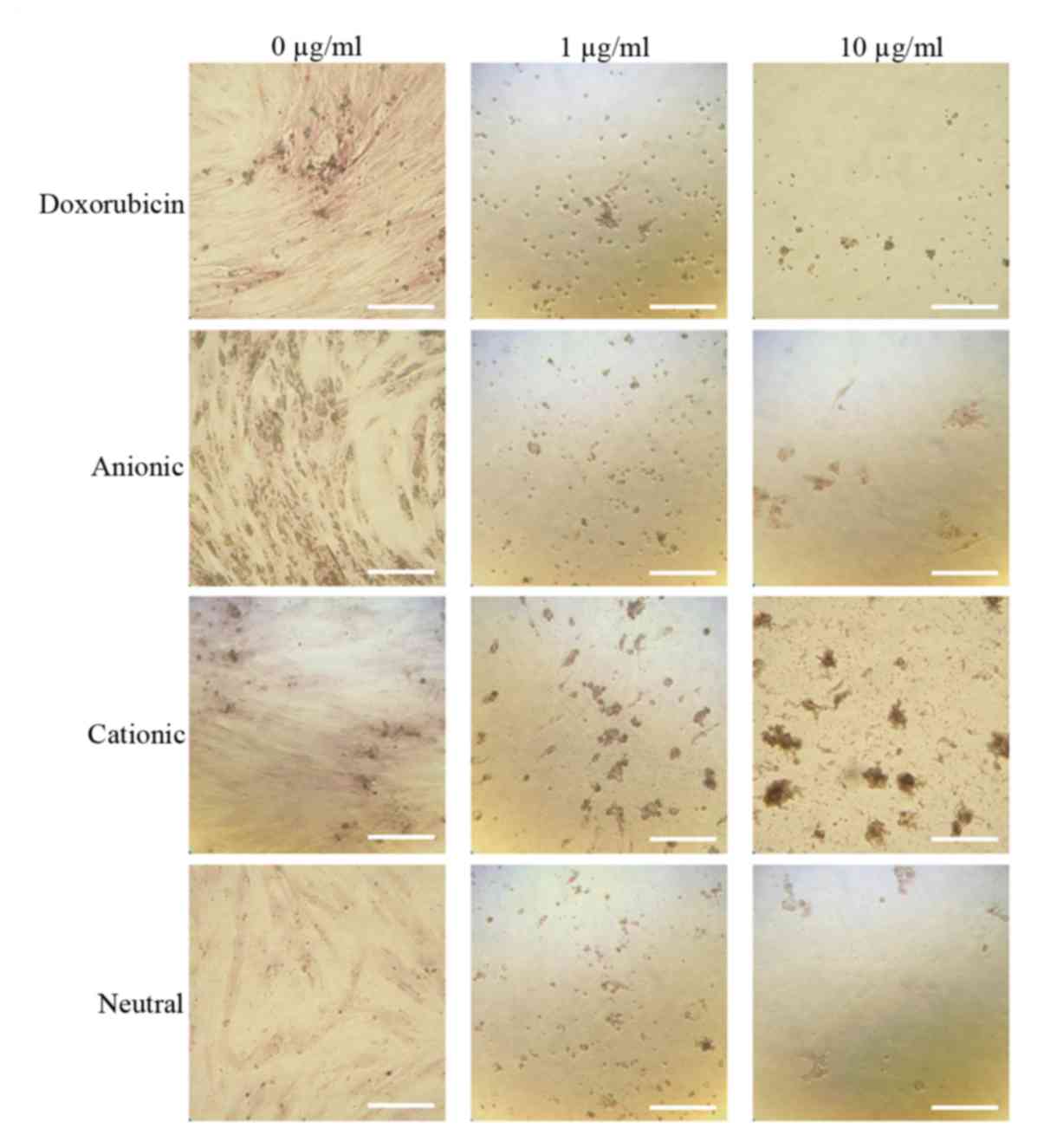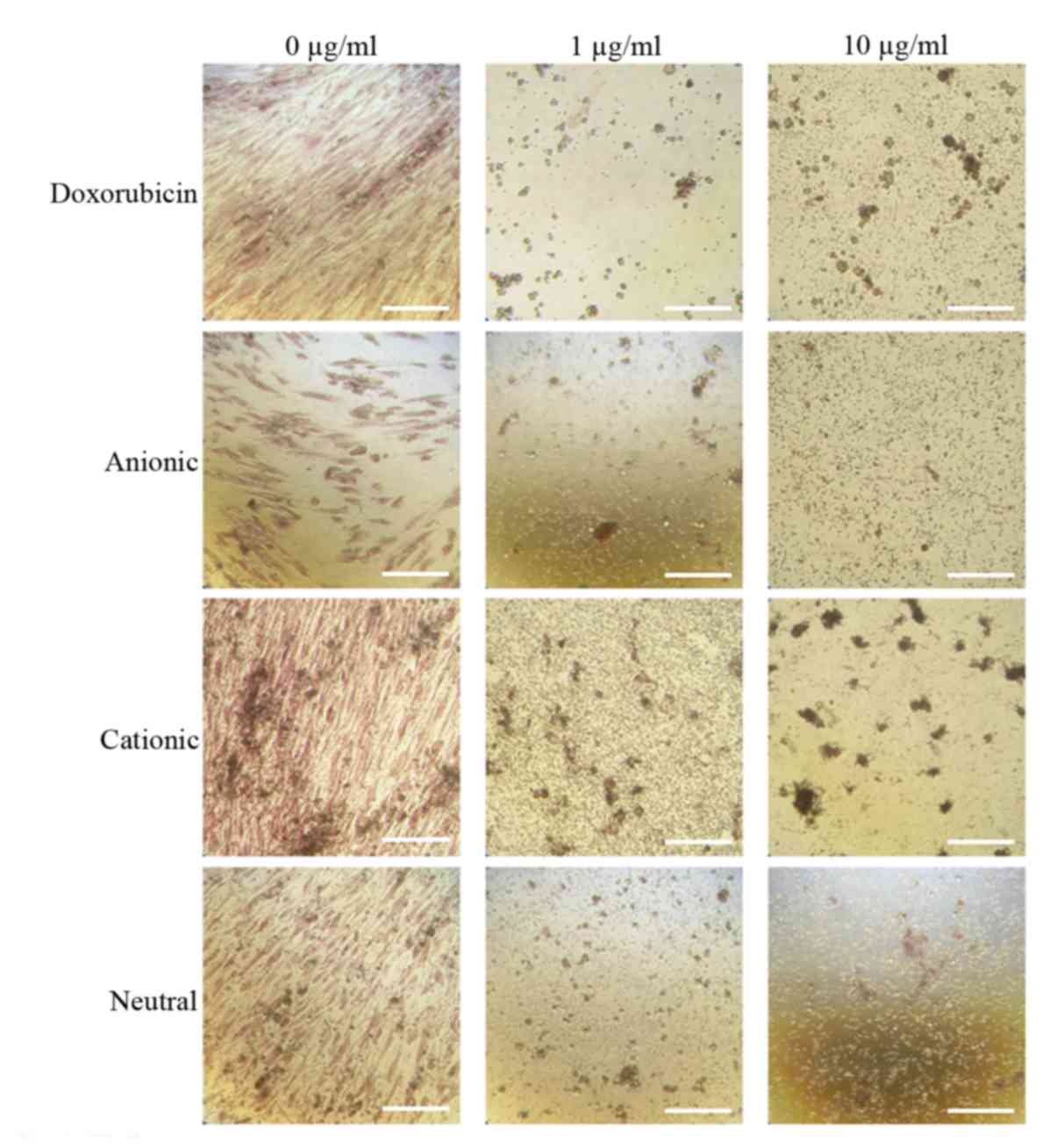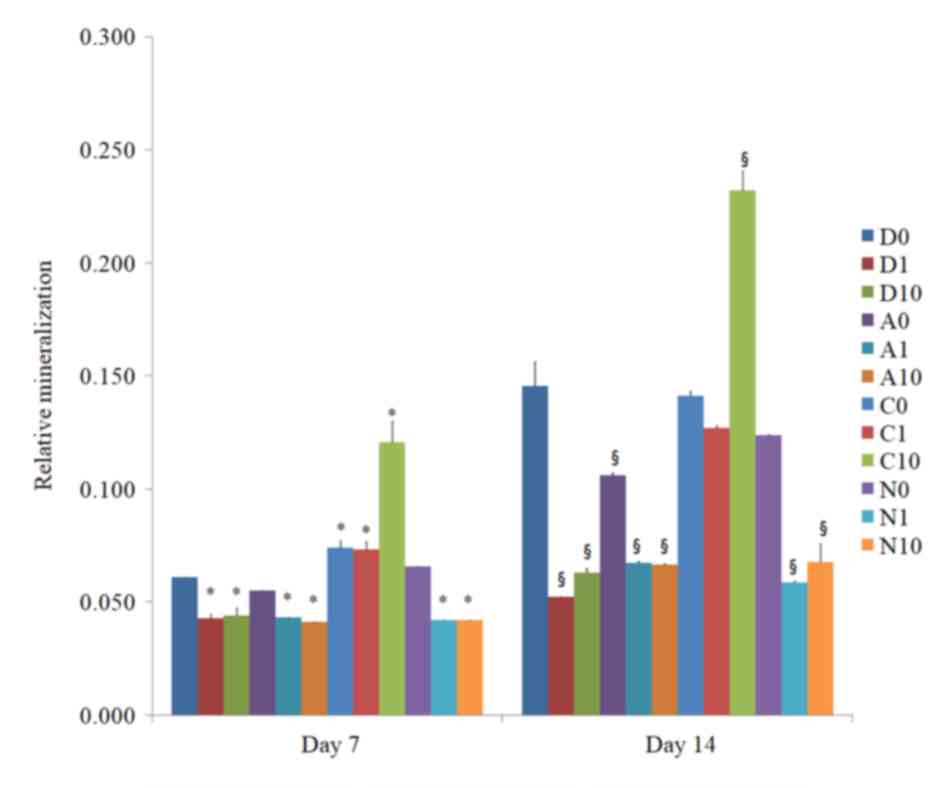|
1
|
Ruttala HB, Ramasamy T, Gupta B, Choi HG,
Yong CS and Kim JO: Multiple polysaccharide-drug complex-loaded
liposomes: A unique strategy in drug loading and cancer targeting.
Carbohydr Polym. 173:57–66. 2017. View Article : Google Scholar : PubMed/NCBI
|
|
2
|
Bagnyukova TV, Serebriiskii IG, Zhou Y,
Hopper-Borge EA, Golemis EA and Astsaturov I: Chemotherapy and
signaling: How can targeted therapies supercharge cytotoxic agents?
Cancer Biol Ther. 10:839–853. 2010. View Article : Google Scholar : PubMed/NCBI
|
|
3
|
Zhang Y, Zhai M, Chen Z, Han X, Yu F, Li
Z, Xie X, Han C, Yu L, Yang Y and Mei X: Dual-modified liposome
codelivery of doxorubicin and vincristine improve targeting and
therapeutic efficacy of glioma. Drug Deliv. 24:1045–1055. 2017.
View Article : Google Scholar : PubMed/NCBI
|
|
4
|
Rana T, Chakrabarti A, Freeman M and
Biswas S: Doxorubicin-mediated bone loss in breast cancer bone
metastases is driven by an interplay between oxidative stress and
induction of TGFbeta. PLoS One. 8:e780432013. View Article : Google Scholar : PubMed/NCBI
|
|
5
|
Affram K, Udofot O, Singh M, Krishnan S,
Reams R, Rosenberg J and Agyare E: Smart thermosensitive liposomes
for effective solid tumor therapy and in vivo imaging. PLoS One.
12:e01851162017. View Article : Google Scholar : PubMed/NCBI
|
|
6
|
Fukuda A, Tahara K, Hane Y, Matsui T,
Sasaoka S, Hatahira H, Motooka Y, Hasegawa S, Naganuma M, Abe J, et
al: Comparison of the adverse event profiles of conventional and
liposomal formulations of doxorubicin using the FDA adverse event
reporting system. PLoS One. 12:e01856542017. View Article : Google Scholar : PubMed/NCBI
|
|
7
|
Lee H, Son J, Na CB, Yi G, Koo H and Park
JB: The effects of doxorubicin-loaded liposomes on viability, stem
cell surface marker expression and secretion of vascular
endothelial growth factor of three-dimensional stem cell spheroids.
Exp Ther Med. 15:4950–4960. 2018.PubMed/NCBI
|
|
8
|
Jin SH, Lee JE, Yun JH, Kim I, Ko Y and
Park JB: Isolation and characterization of human mesenchymal stem
cells from gingival connective tissue. J Periodontal Res.
50:461–467. 2015. View Article : Google Scholar : PubMed/NCBI
|
|
9
|
Contrera JF, Matthews EJ, Kruhlak NL and
Benz RD: Estimating the safe starting dose in phase I clinical
trials and no observed effect level based on QSAR modeling of the
human maximum recommended daily dose. Regul Toxicol Pharmacol.
40:185–206. 2004. View Article : Google Scholar : PubMed/NCBI
|
|
10
|
Niu H, Xu M, Li S, Chen J, Luo J, Zhao X,
Gao C and Li X: High-performance liquid chromatography (HPLC)
quantification of liposome-delivered doxorubicin in arthritic
joints of collagen-induced arthritis rats. Med Sci Monit Basic Res.
23:150–158. 2017. View Article : Google Scholar : PubMed/NCBI
|
|
11
|
Daeihamed M, Haeri A, Ostad SN, Akhlaghi
MF and Dadashzadeh S: Doxorubicin-loaded liposomes: Enhancing the
oral bioavailability by modulation of physicochemical
characteristics. Nanomedicine (Lond). 12:1187–1202. 2017.
View Article : Google Scholar : PubMed/NCBI
|
|
12
|
Xu H, Zhang L, Li L, Liu Y, Chao Y, Liu X,
Jin Z, Chen Y, Tang X, He H, et al: Membrane-loaded doxorubicin
liposomes based on ion-pairing technology with high drug loading
and pH-responsive property. AAPS PharmSciTech. 18:2120–2130. 2017.
View Article : Google Scholar : PubMed/NCBI
|
|
13
|
Moitra P, Kumar K, Sarkar S, Kondaiah P,
Duan W and Bhattacharya S: New pH-responsive gemini lipid derived
co-liposomes for efficacious doxorubicin delivery to drug resistant
cancer cells. Chem Commun (Camb). 53:8184–8187. 2017. View Article : Google Scholar : PubMed/NCBI
|
|
14
|
Lee S, Lee SY, Park S, Ryu JH, Na JH, Koo
H, Lee KE, Jeon H, Kwon IC, Kim K and Jeong SY: In vivo NIRF
imaging of tumor targetability of nanosized liposomes in
tumor-bearing mice. Macromol Biosci. 12:849–856. 2012. View Article : Google Scholar : PubMed/NCBI
|
|
15
|
Sarfraz M, Afzal A, Raza SM, Bashir S,
Madni A, Khan MW, Ma X and Xiang G: Liposomal co-delivered
oleanolic acid attenuates doxorubicin-induced multi-organ toxicity
in hepatocellular carcinoma. Oncotarget. 8:47136–47153. 2017.
View Article : Google Scholar : PubMed/NCBI
|
|
16
|
Sreekanth V, Medatwal N, Pal S, Kumar S,
Sengupta S and Bajaj A: Molecular self-assembly of bile
acid-phospholipids controls the delivery of doxorubicin and mice
survivability. Mol Pharm. 14:2649–2659. 2017. View Article : Google Scholar : PubMed/NCBI
|
|
17
|
Razavi-Azarkhiavi K, Jaafari MR, Abnous K,
Razavi BM, Jafarian AH, Hassani FV, Shirani K and Karimi G: The
cardiotoxic mechanism of doxorubicin (DOX) and pegylated liposomal
DOX in mice bearing C-26 colon carcinoma: A study focused on
microRNA role for toxicity assessment of new formulations. Pharm
Res. 34:1849–1856. 2017. View Article : Google Scholar : PubMed/NCBI
|















